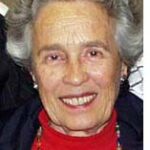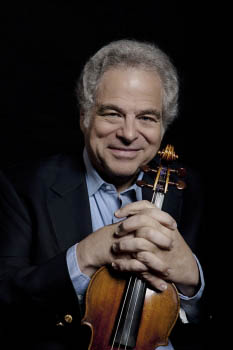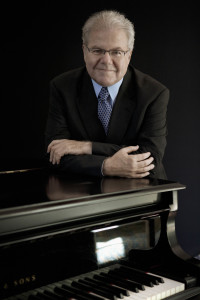By Eileen Wingard


(Photo: Lisa Marie Mazzucco, Strings Exclusive)
SAN DIEGO — As Itzhak Perlman entered the stage, seated on a motorized scooter, steering with one hand and holding his violin and bow with the other, I recalled the cherub-faced 12-year-old Israeli prodigy when he first appeared in the USA on the Ed Sullivan show. I have followed his career ever since, as he has risen to become one of the world’s greatest violinists.
This recital, under the auspices of the La Jolla Music Society, took place at the Jacobs Music Center Copley Symphony Hall on January 20th. It was part of a month long festival of the piano, inaugurated by the San Diego Symphony Orchestra.
In sonatas by Mozart, Faure and Strauss and a selection of shorter pieces, Perlman’s golden sunshine tone and effortless technic once again illuminated every note he played.
Partnered by the brilliant pianist, Emanuel Ax, the two looked like brothers, both round-faced with halos of silver hair. They performed like musical siblings, fully integrating their parts into a seamless ensemble.

(Photo: Lisa Marie Massucco)
The Mozart Sonata featured the piano with the violin often serving as an obligato to the keyboard’s prominent role. When Perlman did have the melody, his carefully shaped phrasing and subtle dynamics were captivating.
The Faure sonata opened with the violin soaring as it ascended in sensuous beauty. The French composer, Gabriel Faure, was a transitional figure between the Romantic and Modern periods.
What Saint-Saen called “curious sonorities” in this sonata seemed to foreshadow the sounds of the impressionists. Maurice Ravel, one of the great impressionist composers, was, in fact, one of Faure’s students. The third movement of Faure’s work, with unexpected rhythms in its sprightly opening theme, had a jazzy quality.
The sonata by Richard Strauss was a virtuosic showpiece in the hands of these masters. No wonder this was one of Jascha Heifetz’s favorite works. (Heifetz was considered the greatest violinist of the 20th century). In fact, when Heifetz insisted on performing this work in Israel during a tour in 1953, where Strauss was not performed at the time because of his role in the Nazi regime, it aroused opposition. The great virtuoso was actually assaulted in Jerusalem by a young man wielding a crowbar, hidden under newspapers. Heifetz suffered injury to his right wrist and cancelled one of his recitals.
Strauss wrote the sonata when he was 24. Some of the thematic material resembles motifs from his future tone poems and the Rosenkavelier Waltzes. His challenging string writing is evident in the sonata’s demands, climbing into the violin’s highest registers.
Perlman and Ax completed the evening with four short selections, the Larghetto from Dvorak’s Sonatina, opus 100, the Fantasiestuecke, opus 73 by Robert Schumann, and two of Fritz Kreisler’s most popular works, Schoen Rosmarin and Tambourin Chinois. Both were tossed off with Viennese charm as delightful desserts with schlagsahne.
The capacity audience was well-rewarded with a memorable evening of music making by two of the world’s greatest artists, Violinist Itzhak Perlman and Pianist Emanuel Ax.
*
Wingard is a retired violinist with the San Diego Symphony and a freelance writer specializing in coverage of the arts. She may be contacted via eileen.wingard@sdjewishworld.com. Comments intended for publication in the space below must be accompanied by the letter writer’s first and last name and by his/ her city and state of residence (city and country for those outside the U.S.)